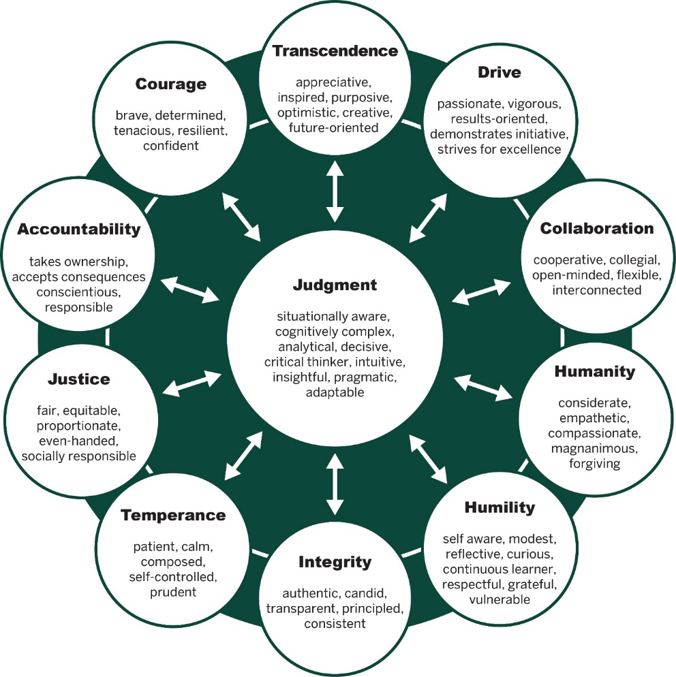Humbitious: The Power of Low-Ego, High-Drive Leadership
Amer Kaissi, a professional speaker and certified executive coach, shares content from his most recent book, from which this article is taken, “Humbitious: The Power of low-ego, high-drive Leadership.” in this article and his podcast, Humbitious: How to be Ambitious Without the Ego.
Based on the extensive research published in the last 10 years, humility in leadership can be thought of in terms of three main building blocks:
- how you understand yourself (self-awareness, self-reflection, and vulnerability);
- how you understand your relationships with others (open-mindedness, appreciation of others, and generosity); and
- how you understand your place in the universe (transcendence).
The first block: How you understand yourself
Humility is first and foremost about having an accurate view of yourself. Although some people—and even some dictionaries— view humility as synonymous with low self-esteem, psychology and leadership experts describe humility as understanding one’s talents and accomplishments while accepting one’s imperfections and shortcomings.
When you have a talent or special skill and you don’t acknowledge it, you are not displaying humility. Rather, you are engaging in self-disparagement and possibly ingratitude. As a humble, smart leader, you should recognize that you are smart but you should also know that you are not smarter than everyone else—or smarter than the collective intelligence of the group that you lead. You can appreciate that you have expertise in strategy, for example, but you should also acknowledge that you don’t know everything about the subject and that you still have a lot to learn.
The second block: How you understand your relationships with others
Once you are aware of your personal limitations, you can be open to new ideas and ways of thinking, and you become willing to learn from others. The clever organizational theorist Karl Weick perfectly captured this when he encouraged leaders to admit the shortcomings of their knowledge: “When a leader is able to humbly admit ‘I don’t know,’ that admission forces the leader to drop the pretense, drop omniscience, drop expert authority, drop a macho posture, and drop monologues . . . listening and exploring is the consequence.”
You then ask for advice, you seek and listen to honest feedback from others, and you even solicit contradictory views. Brad Owens, professor of business ethics at Brigham Young University and one of the leading researchers in the field of humble leadership, describes this quality as “teachability”: the willingness to admit ignorance, appreciate others’ contributions, and learn from them. Teachability entails having an open mind, a curiosity towards others, and an interest in understanding them and their views.
The third block: How you understand your place in the universe
As a humble leader, you aren’t just aware that you need others’ help and ideas; you are also aware of your insignificance in the universe. You may have worked incessantly with your team to develop a new product line that will significantly increase revenue for your organization for years to come, but in the grand scheme of things, your impact is insignificant, and you need to be aware of that.
This nothingness can be appreciated in terms of how powerful God is or how large the universe is, but it can also be realized by simply observing nature or contemplating history. Arrogance can sometimes make you feel like you are the center of the universe, but when you realize how connected everything is and how small and insignificant you are, you can truly develop your humility—and, in so doing, perhaps paradoxically, you become a fuller person.
Please note, though, that transcendence is not a call for surrender, laziness, or relinquishing action. It is about understanding your small role but still doing it to the best of your abilities in a humble and ambitious way. You may not matter much in the grand scheme of things, but you have an important role to play in your small corner of the universe.
ABOUT THE AUTHOR:
Amer Kaissi is a professional speaker and a certified executive coach. His most recent book, from which this article is taken, is “Humbitious: the power of low-ego, high-drive leadership.” Amer is an award-winning Professor of Healthcare Administration at Trinity University, a Top-15 program. He is also the author of the book “Intangibles: The Unexpected Traits of High-Performing Healthcare Leaders,” which has won the 2019 American College of Healthcare Executives (ACHE) Book of the Year award. He is an avid soccer fan and he lives in San Antonio, Texas with his wife and two teenagers.
He can be reached at www.amerkaissi.com or on LinkedIn at https://www.linkedin.com/in/amer-kaissi-ph-d-38258919/
RESOURCES:
Ready to measure your leadership skills? Here is a free assessment provided by the Innovative Leadership Institute that will measure the 7 leadership skills required to succeed during disruption and innovation. Click HERE
If you completed the Leadership Mindset Assessment and want to explore additional resources to develop your leadership, we recommend you:
- Read the Forbes article Are You A Future-Ready Leader– free
- Purchase a comprehensive online course ILI Leadership Mindset Program for $174.99
Check out the companion interview and past episodes of Innovating Leadership, Co-creating Our Future via iTunes, TuneIn, Stitcher, Spotify, Amazon Music, Audible, iHeartRADIO, and NPR One. Also, stay up-to-date on new shows by following the Innovative Leadership Institute LinkedIn.

